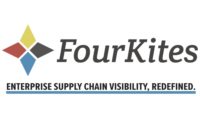How can sensors be used to refine and streamline supply chain and logistics in industries like snack food and wholesale bakery?
Lux Research has released a report titled “Sensing for Modern Logistics” that focuses on the distinct array of challenges that affect the efficiency of supply chains at four critical points: origin, warehousing, transit and destination.
While sensors can help companies become aware of and address such issues, ideally before they become disruptive, sensing solutions for use in the logistics field are not well coordinated or standardized, the report says. Yet they are central to bringing about the information transparency needed to spur supply chain planning, optimization and risk management.
The Lux report, written by analyst Lisheng Gao with contributions from research directors Shriram Ramanathan and Jonathan Melnick, states that the ongoing fragmentation with different companies providing solutions for different stages of the process is not ideal, but that fragmentation likely will not last.
“[W]e expect gradual standardization and consolidation of sensing solutions within each industry due to the shared common interests that facilitate the process,” the authors write.
Given the central importance to connecting supply chains among different sectors, logistics functions must be built and maintained correctly to ensure smooth movement of materials and products, the report says. This has only become more important during COVID-19, given its rapid disruptions in supply and demand as well as changes in restrictions on movement of goods.
Sensing solutions at the point of origin can help to ensure the right product in the right quantity is ready to be shipped, Lux notes. In the warehouse, they ensure products are stored in the correct conditions and keep track of the location and duration of stay. In transit, sensing solutions ensure the correct conditions and that the journey is on time and reaches its destination. Finally, at the destination, sensors ensure the integrity of goods and the ultimate receipt by the right party.
Specific to the transit phase of the journey, Lux says that’s often where information transparency is most challenging, due to both technical and human factors. Sensing solutions provide end-to-end visibility to all stakeholders to the process, tracking location, monitoring the condition of particularly high-end goods, and ensuring security and control.
GPS and wireless communications are needed to track real-time locations, the report notes, and a variety of sensors built into devices measure and communicate that data. But the solutions on the market presently are optimized for targeted and unique applications with little overlap. “[T]he lack of comprehensive and standardized platforms increases the costs, especially when multiple pain points need to be tackled,” the report says.
Going forward, Lux predicts some continued fragmentation but increasingly diversified solutions, with maturing sensor technology that will lead to innovations. The report also predicts consolidation within individual industry sectors due to the availability of mature and affordable sensor technology as well as more easily identified shared issues.
Finally, Lux predicts a greater focus on analytics among sensor solution providers, with not only the data that tracks what happened during logistics but greater explanation of the “why”—the root cause behind successes and challenges that end users experience.









